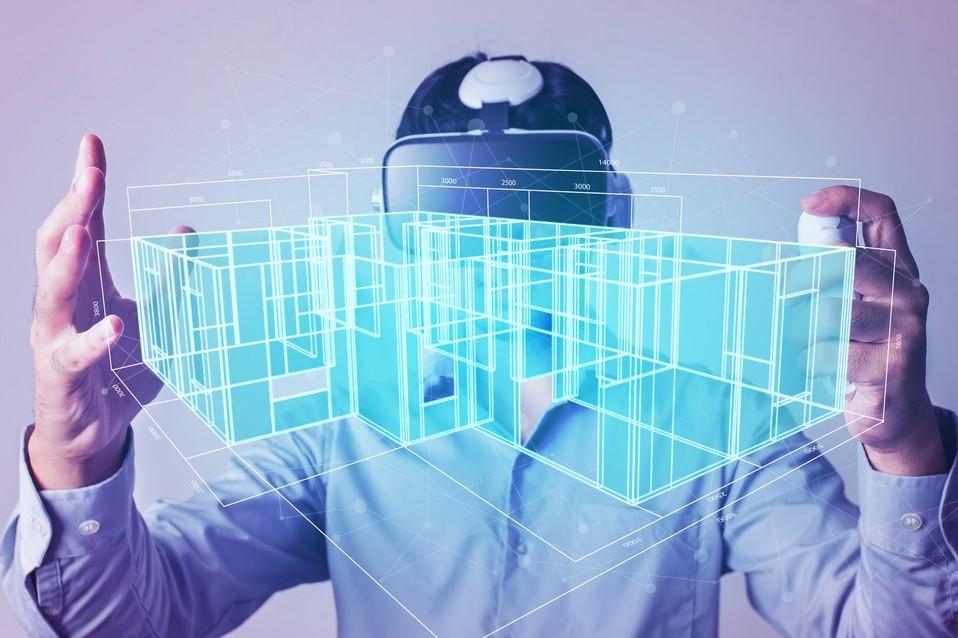Extended reality, or XR, is a term used to describe virtual-, augmented- and mixed-reality environments, sometimes referred to collectively as the metaverse. There is debate about how best to use these new digital technologies in HE and many institutions around the world are starting to establish a diverse range of XR facilities.
As XR spaces become more widely available in higher education, now is a good time to reflect on the opportunities for using these technologies to enhance teaching and student engagement.
Architect educators have started to incorporate XR into the design studios of architecture departments. The University of Portsmouth was an early adopter of digital technologies, providing architecture students with access to computer-aided design (CAD) software from the early 1990s onwards. More recently, facilities such as the Media Hub and the Centre for Creative & Immersive Extended Reality (CCi-XR) have helped students and staff to consider new ways of using digital technologies to enable a range of experiences relating to research, multimedia production and education.
Here we will describe what has been experienced so far and draw lessons for a range of creative and design-focused disciplines.
- Should we be worried? An educators’ introduction to the metaverse
- Teaching within virtual reality worlds: what, why and when
- Augmented reality in teaching: key challenges and how to overcome them
Capturing reality
State-of-the-art technologies in surveying and mapping, such as photogrammetry and the scanning of objects and natural formations by light detection and ranging (known more commonly as LiDAR), use photography to ascertain measurements between objects. For instance, in combination with aerial drones, archaeologists can use photogrammetry and LiDAR to create accurate and fully textured three-dimensional models of sites to capture a range of subjects from the smallest artefacts to entire landscapes.
In architecture and design, the new technologies make it possible for students and staff to obtain digital copies of existing physical buildings, showing details and material junctions in very high resolution. Working with digital twins of real objects and real buildings reproduces urban settings and architectural contexts in the same way as traditional surveys, where we once used optical instruments mounted on tripods, laser distance measurers and simple tape measures.
In the forensic sciences, digital scanning enables the three-dimensional recording of crime scenes. It can be used to produce models of objects within a space or a landscape in digital form (coordinates, measurements, surface, area) or graphical form (sketches, diagrams, maps).
The process of recording architectural and urban heritage is becoming quicker and more accurate. By documenting historic buildings and landscapes through the creation of detailed three-dimensional models, students and colleagues can make projects interactive, allowing experiences and explorations to happen through virtual headsets and interactive applications. Those who interact with these digital replicas of physical environments can discover more about heritage through interactive stories, accessed through everyday devices such as digital tablets and mobile phones.
However, capturing reality is not limited to static objects.
XR facilities provide access to volumetric video studios and motion capture, which can record and digitise human movements and animated physical objects, tracking motion and reassigning the collected data to virtual characters or digital artefacts. While these techniques have been widely used in film production and video games, the potential for all disciplines involving design are yet to be explored in terms of education and research. For example, 360° video capture is being used to create virtual catwalks to exhibit the work of fashion students to a wider audience, when compared with a traditional in-person end-of-year graduate show.
Extending reality
When digitally produced immersive worlds intersect with analogue realities, new and unexpected opportunities arise for higher education. Helping students to build stories within their design portfolios by incorporating the use of virtual headsets (and, in the not-too-distant future, connecting to XR stations equipped with haptic gloves and 360-degree treadmills) might soon be the norm.
Using these digital technologies will provide sensory and motor interactions, encompassing visual and embodied experiences. Other projects – for example, simulating the experience of driving a large vehicle, performing surgery or exploring how architectural materials combine to make the facade of a building – are all ways that could extend the learning experience for students far beyond the flatness of a computer screen, into three-dimensional virtual realms.
XR facilities and equipment, when located in universities, can be tested, prototyped and experimented with in new and interesting ways while being fully embedded within the learning process. Educators are working with students to explore how the emerging realities of the metaverse can be combined with the handmade to create unexpected and life-changing artefacts and products.
The potential for XR in higher education is exciting. The challenge for educators is to discover how best to incorporate these new digital technologies into existing learning environments. Some technologies, such as VR headsets, smartphone AR applications and small drones, are becoming more affordable and are relatively straightforward to use, even by non XR experts. The larger pieces of equipment, such as LiDAR scanners, six-axis robots and spaces dedicated to photogrammetry and motion capture, will become more accessible and affordable over time.
Providing students with access to some, if not all of these digital technologies as they progress through their university education, will help to prepare them for future employment. For educators, continuing to work in a transdisciplinary manner by collaborating with colleagues who are experts in XR will help to enliven and enhance the higher education learning environment for students.
Martin W. Andrews is an architect and associate dean for global engagement and education partnerships in the Faculty of Creative & Cultural Industries; Antonino Di Raimo is an architect and reader in architecture in the School of Architecture, both at the University of Portsmouth.
If you found this interesting and want advice and insight from academics and university staff delivered direct to your inbox each week, sign up for the THE Campus newsletter.




comment